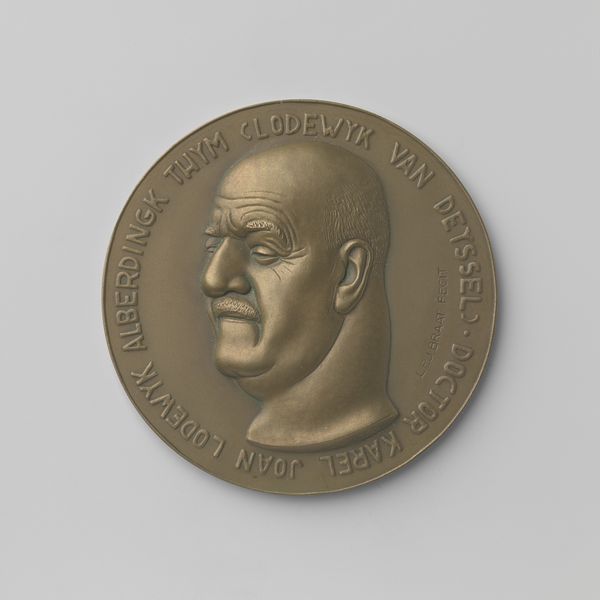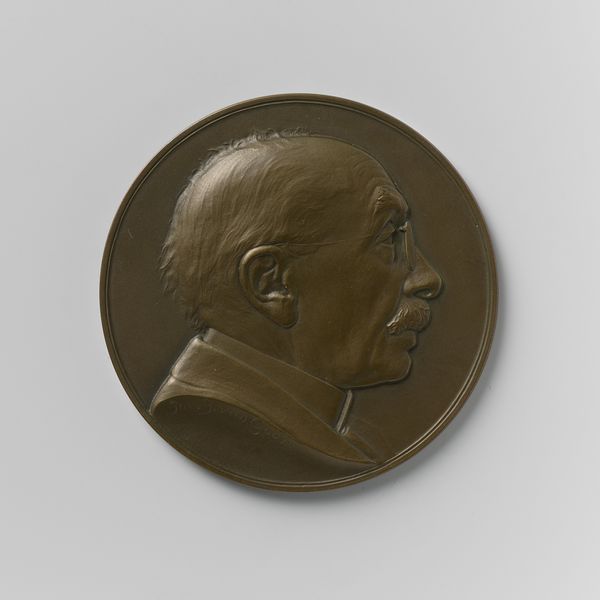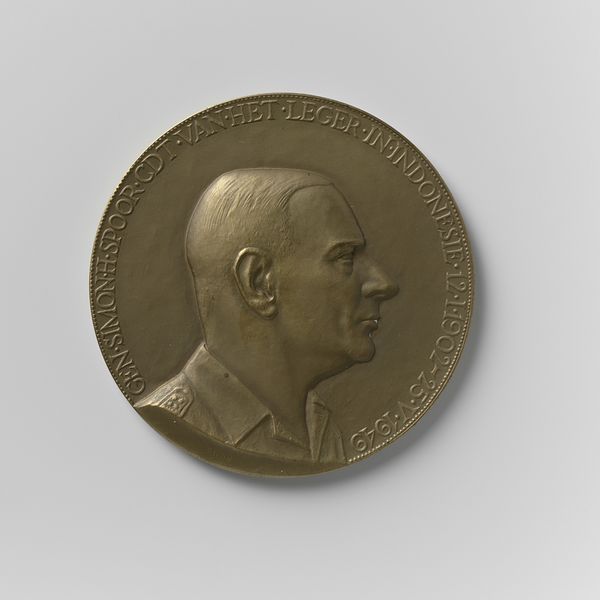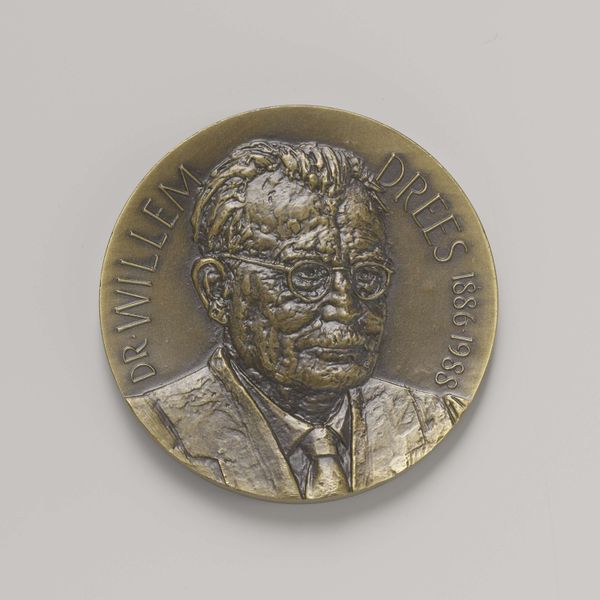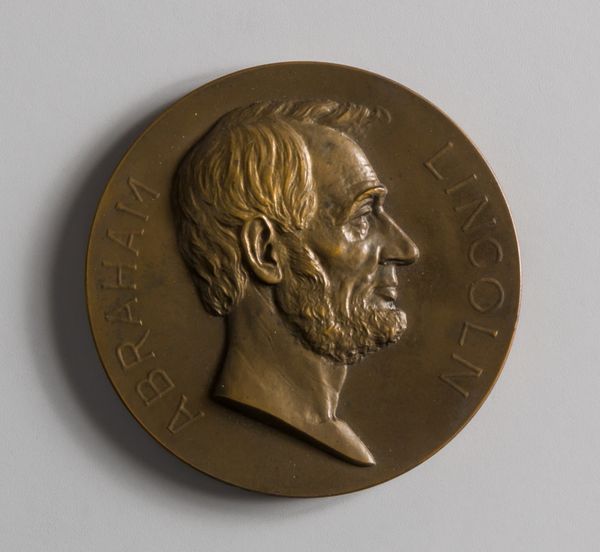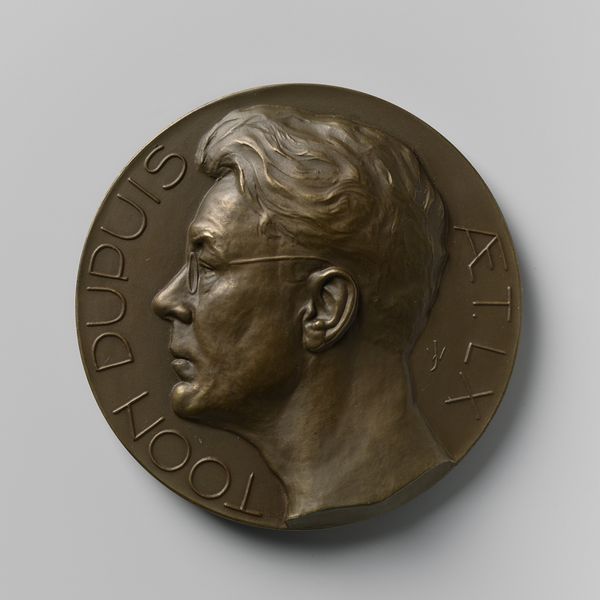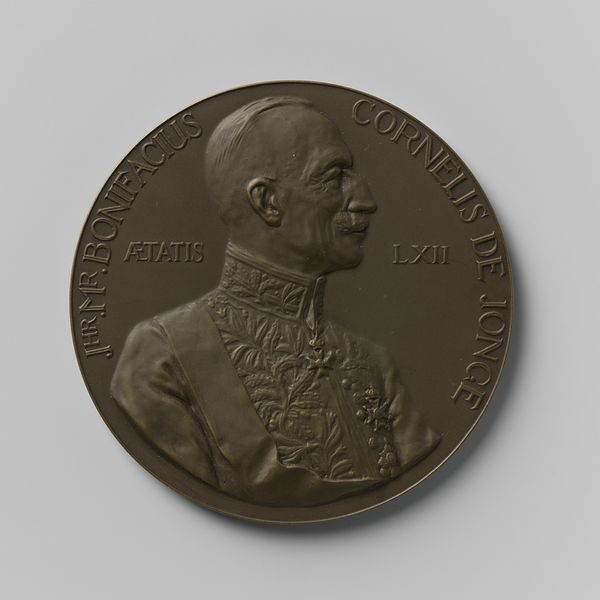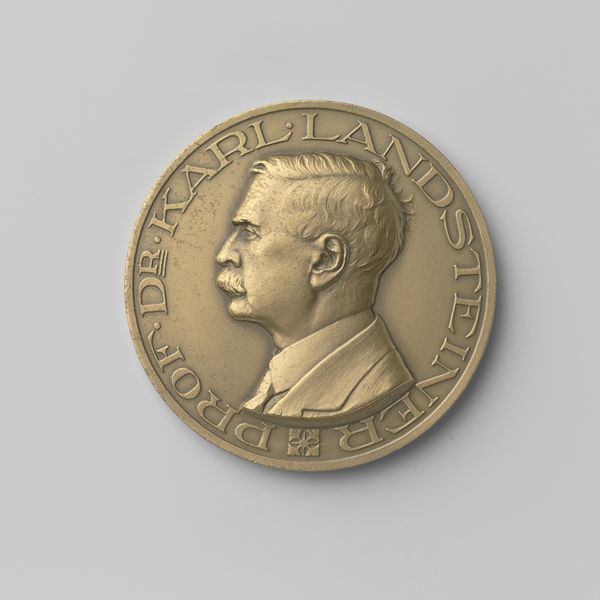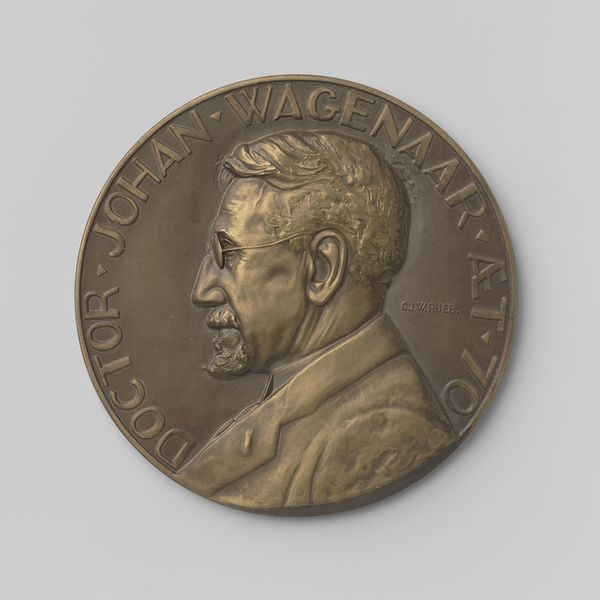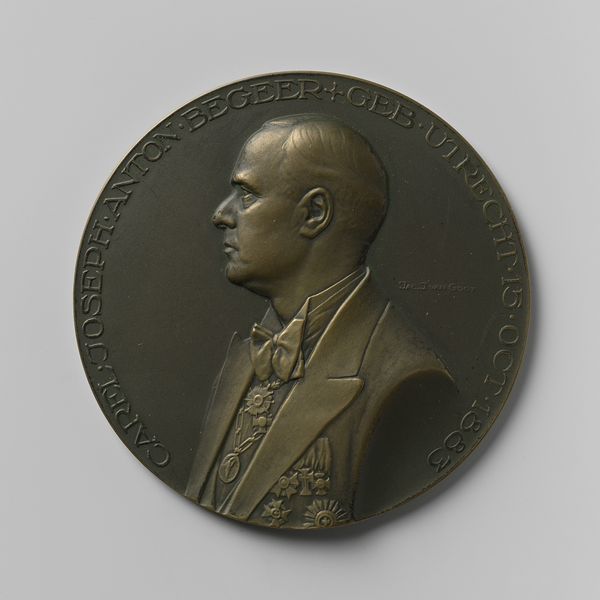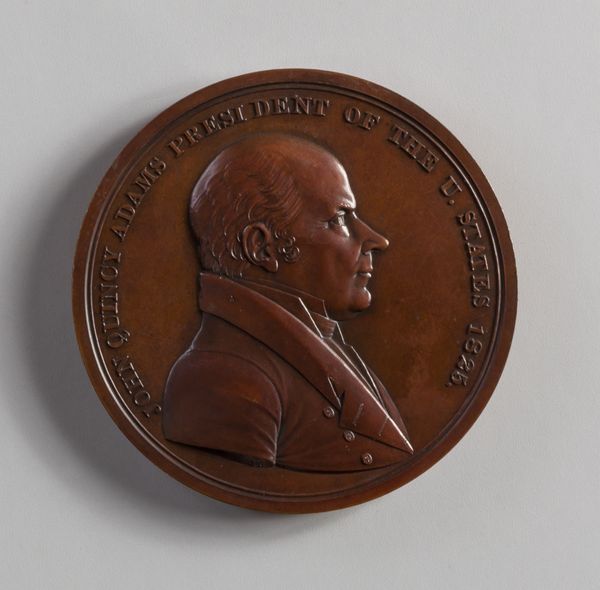
metal, bronze, sculpture
#
portrait
#
metal
#
bronze
#
sculpture
#
realism
Dimensions: diameter 6.0 cm, weight 95.08 gr
Copyright: Rijks Museum: Open Domain
Curator: Let’s take a look at “J.F. Buziau 1938” by Marian Gobius. It’s a bronze sculpture, a portrait in profile. Editor: The face… it's so meticulously rendered. You can almost feel the coolness of the metal capturing the warmth of skin, the gentle weathering it evokes. Curator: Exactly. Gobius, known for his realist style, created this work in a period where portraiture often served specific societal functions, commemorating individuals within particular institutional frameworks. Think patronage, commemoration in public squares... Editor: A commemorative object, clearly. But it is crafted in bronze; the texture looks deliberately aged, it is more than a visual recording of someone's likeness. It's about material legacy. Who was J.F. Buziau, and why bronze? Curator: J.F. Buziau was a notable figure of his time, whose contribution the artist was charged to capture in a long lasting monument, that is likely why bronze was chosen. Gobius created several portraits of prominent figures. Editor: The date, 1938. Just before the storm of World War II. Is the somber tone a reflection of the impending conflict? The bronze lends a weightiness, as if preserving something precious before it's lost to the ravages of time. Curator: It's plausible. There’s always an interaction of individual portraiture with macro-historical contexts. And as far as production goes, let's consider the process of bronze casting itself – the skill, the labor involved in creating a singular piece. It was also about power in commissioning artworks of this kind. Editor: Precisely. The very materiality speaks volumes. We should investigate how such a durable substance connects with notions of lasting impact. Curator: So we've navigated from realism and societal roles all the way back to the material make-up itself. The dialogue really shows how different layers can be discovered within one seemingly simple object. Editor: Agreed. It is interesting to find that by diving into the means and circumstances of its making, as well as this era of realism. What's left unsaid is also revealed about power, craft, and lasting effects.
Comments
No comments
Be the first to comment and join the conversation on the ultimate creative platform.
